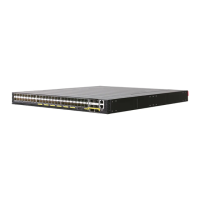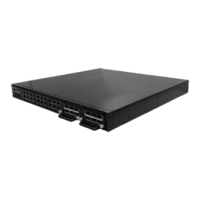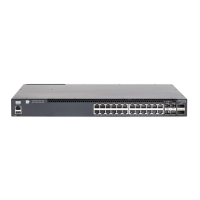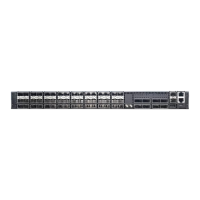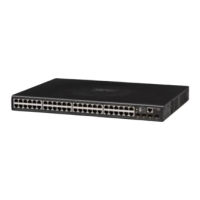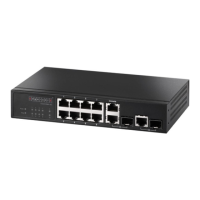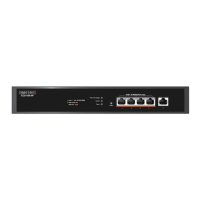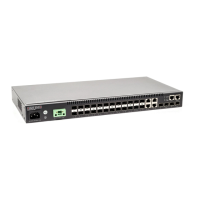Chapter 18
| VLAN Commands
Configuring VXLAN Tunneling
– 500 –
vxlan flood This command configures remote VXLAN tunnel endpoint (VTEP) when the
received packet fails bridge table lookup. Use the no form to restore the default
setting.
Syntax
vxlan [vni vni-id] flood { r-vtep ip-address | multicast ipv4-address vlan vid
interface }
no vxlan [vni vni-id] flood { r-vtep ip-address | multicast }
vni-id - A 24-bit segment ID used to identify each VXLAN segment, termed
the VXLAN Network Identifier. The VNI is used in an outer header that
encapsulates the inner MAC frame originated by a virtual machine (VM).
ip-address - The IPv4/v6 address assigned to a remote VTEP. If the egress
port is not found, the packet is encapsulated as a unicast packet and
flooded to all VTEPs on this VNI.
multicast - Multicast is used for carrying unknown destination, broadcast,
and multicast frames.
ipv4-address - Each VTEP VNI joins this multicast group as an IP host
through the IGMP. IGMP joins are used to trigger PIM joins for this group.
vid - The VLAN assigned to this VNI.
interface - The port assigned to this VNI.
ethernet unit/port
unit - Unit identifier. (Range: 1)
port - Port number. (Range: 1-32/54)
Default Setting
None
Command Mode
Global Configuration
Command Usage
◆ VTEPs communicate with one another through flooding or multicast within the
specified multicast group.
◆ When a VNI is configured to flood by multicasting, all unknown unicast,
multicast and broadcast packets are transmitted by encapsulating them in
multicast packets.
◆ Each VNI can be assigned to only one VLAN (using the vxlan vlan vni
command); and each VLAN can be assigned a maximum of one VNI. Multiple
remote VTEPs can be configured to flood packets on the same VNI.

